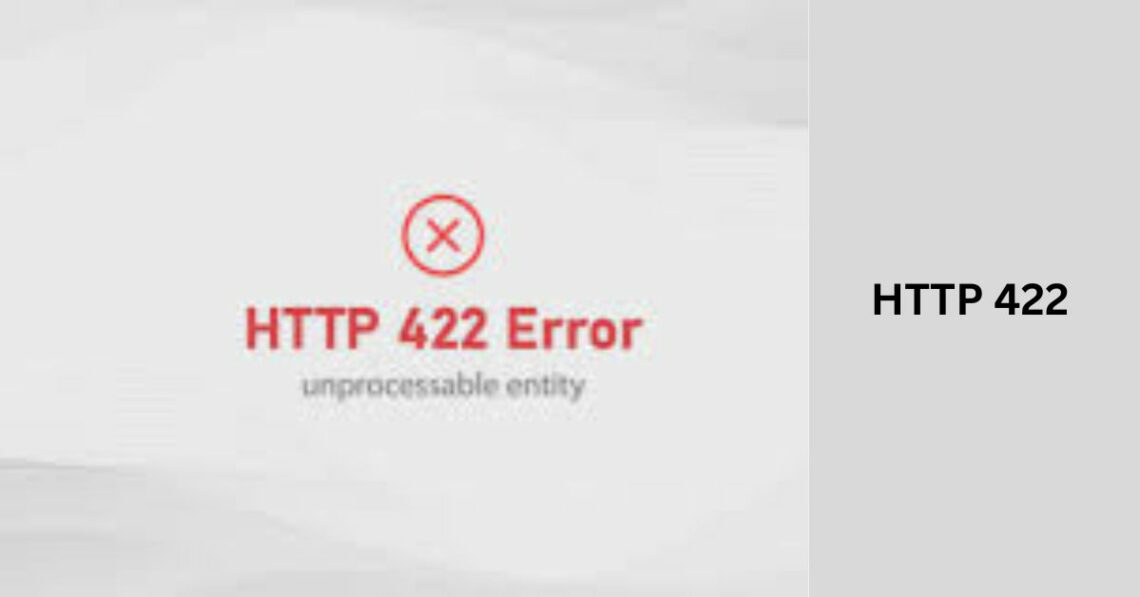
HTTP 422 – The Evolution of HTTP Status Code 422
The HTTP 422 status code, also known as “Unprocessable Entity,” HTTP status code 422, part of the Web Distributed Authoring and Versioning (WebDAV) extensions, indicates that the server comprehends the content type of the request entity but struggles to process the enclosed instructions.
Table of Contents
How Does HTTP Status Code 422 Differ from Others:
Distinctions between HTTP status codes are critical for precise error handling. Comparing HTTP 422 with codes like 400 (Bad Request) and 415 (Unsupported Media Type) reveals its unique role. While 400 denotes issues with request syntax and 415 pertains to unsupported media types, HTTP 422 shines in scenarios where the server understands the request but encounters semantic errors.
The Evolution of HTTP Status Code 422:
HTTP status code 422 emerged from the WebDAV extensions, designed to facilitate collaborative file management on remote servers. It addresses situations where the server can’t process well-formed requests due to semantic errors within the instructions. This evolution showcases the adaptability of HTTP to meet evolving internet requirements.
THE BENEFITS OF JOINING A REFORMER PILATES STUDIO IN SYDNEY
Advantages of HTTP status code 422:
While HTTP status code 422, also known as “Unprocessable Entity,” is typically associated with errors, it offers several advantages in specific situations. Here are some benefits and advantages of using HTTP code 422
1. Granular Error Reporting:
HTTP 422 provides more granular error reporting than generic error codes like 400 (Bad Request). It allows developers to pinpoint issues related to semantic errors in the request entity.
2. Handling of Semantic Errors:
HTTP 422 is specifically used to handle situations where the server can’t process well-formed requests due to semantic errors. It distinguishes between errors in the meaning of the data and syntactical issues.
3. Preventing Retrying Without Modification:
HTTP 422 signals that the request was semantically erroneous and ignored without modification. It prevents unnecessary retries that could lead to repeated errors.
4. Enhanced User Experience:
By HTTP 422, developers can catch and communicate errors related to user input or form submissions more accurately.
REBELDEMENTE – THE ULTIMATE GUIDE!
Root Causes of HTTP Code Error 422:
The common root causes of HTTP 422 errors are the following:
1. Invalid API Requests:
If your website communicates with an API, incorrect API calls can result in a 422 error. Users should Double-check API calls for correct parameters, headers, and valid data in the request body. Use API testing tools such as Postman or cURL to debug and test API requests. Refer to the API documentation to ensure proper data format.
2. Semantic Errors in Request Body:
Semantic errors occur when the server cannot understand the meaning of the data in the request body. You must Rigorously test and validate data before sending it to the server. Ensure that the instructions in the request make sense and align with the server’s expectations. Debug and refine the data to eliminate semantic errors.
3. Validation of Request Parameters:
If the request includes parameters that do not cohere with the server’s validation rules, it may lead to a 422 error. Check the specifics of the request, including parameters, and ensure they meet the server’s validation criteria. Adjust the request parameters as needed to align with the server’s expectations.
4. Inconsistent Data Formats:
Data inconsistencies, such as mismatched formats or conflicting instructions, can trigger a 422 error. Thoroughly review the data formats in the request body. Ensure that the data aligns with the expected format and that there are no conflicting instructions or contradictory information.
HEAT IN MOTION: ENGINEERING SOLUTIONS FOR SUSTAINABLE ENERGY
Step-Wise Tips for Troubleshooting and Resolving HTTP Status Code 422
Identifying the Error: Use server logs, website monitoring tools, and SEO auditing tools to detect HTTP 422 errors.
Understanding the Error: Analyze the specifics of the request, focusing on URLs, query parameters, and request body data.
Common Issues and Solutions: Address issues like incorrect form data, invalid API requests, strict server validation, and faulty server-side code. Employ form testing tools and API testing tools.
Use of Tools like HTTP Status Code Checker: Tools like SiteChecker Pro’s HTTP Status Code Checker can automate the detection and reporting of 422 errors, streamlining the resolution process.
Conclusion:
In conclusion, HTTP status code 422, the “Unprocessable Entity,” is crucial in handling semantic errors during web interactions. Understanding its history, benefits, and distinctions from other codes provides developers valuable insights into effective error handling. By employing systematic troubleshooting and resolution approaches, websites can ensure a seamless user experience and maintain good standing with search engine algorithms.
You May Also Like

Ovestæ – The Concept Bridging Heritage and Modernity!
March 6, 2025
Cutting-edge technology – The Ultimate Guide!
May 6, 2024

Average Rating